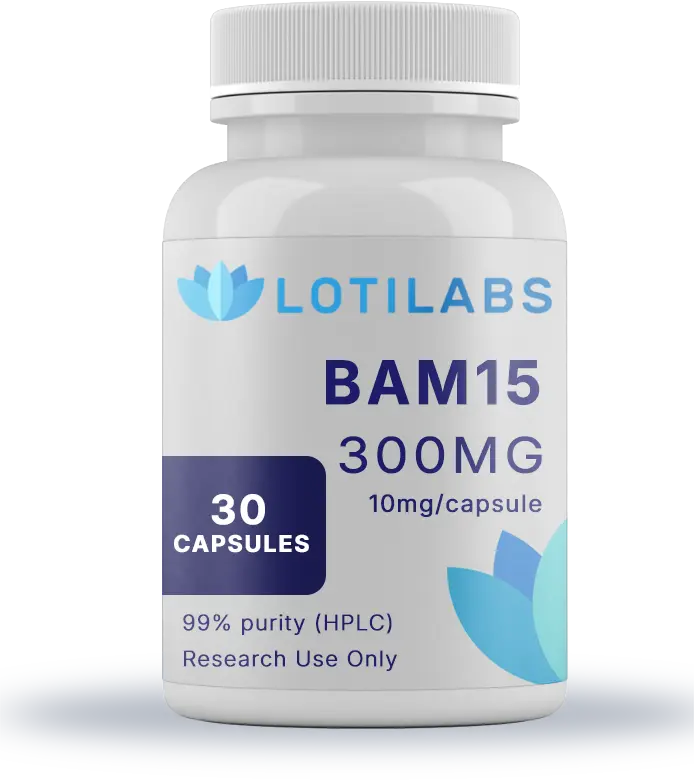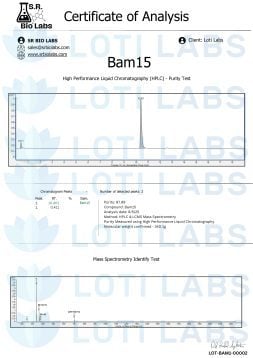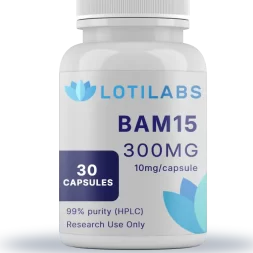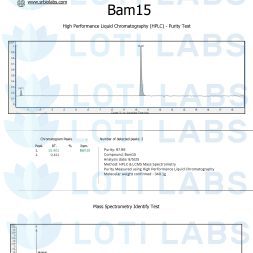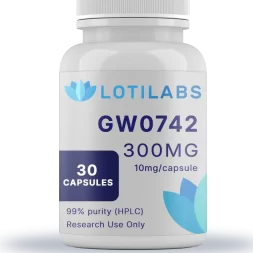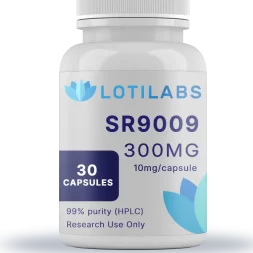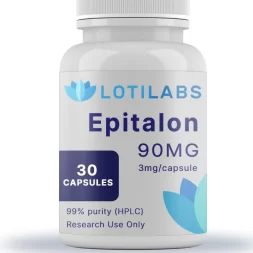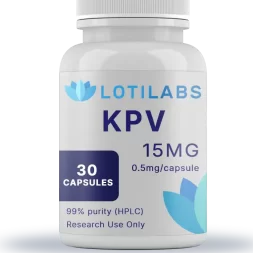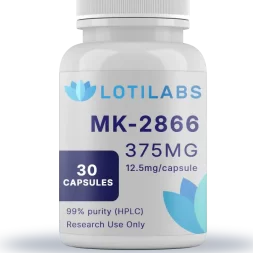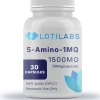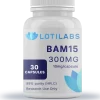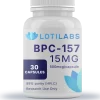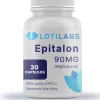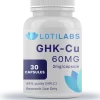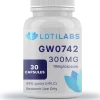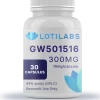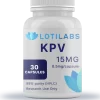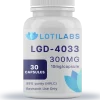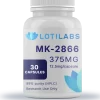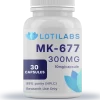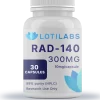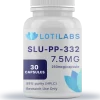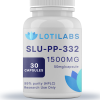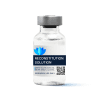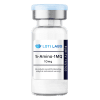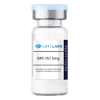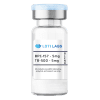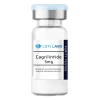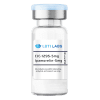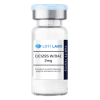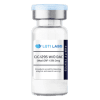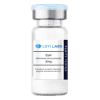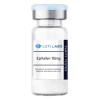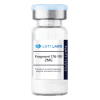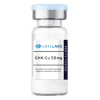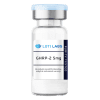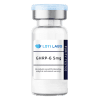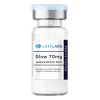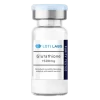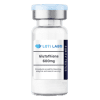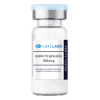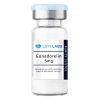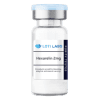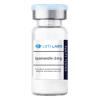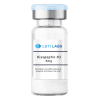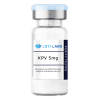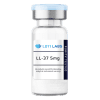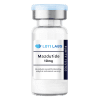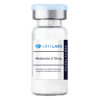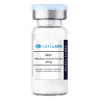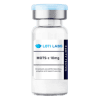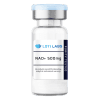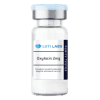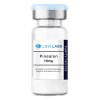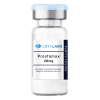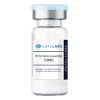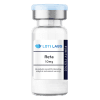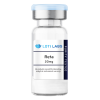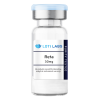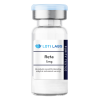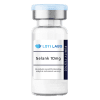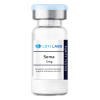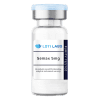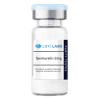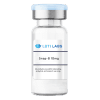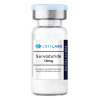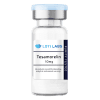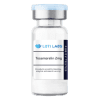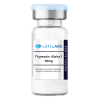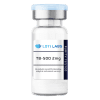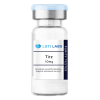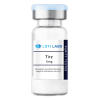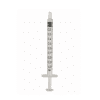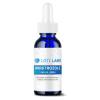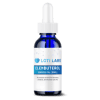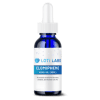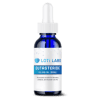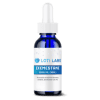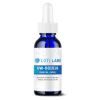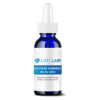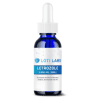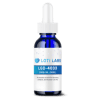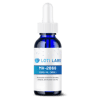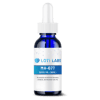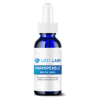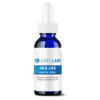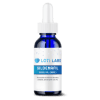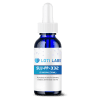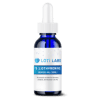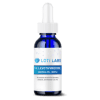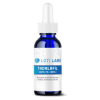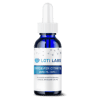BAM15 Capsules (10mg/capsule, 30 capsules)
$79.99
You save
Capsules are for laboratory, research, analytical, and measurement purposes only. Capsules offer a protective barrier between sensitive chemical compounds and environmental elements, such as moisture. Not for human consumption or veterinary use.
In stock

Buy BAM15 Capsules: High-Purity Research Compound for Mitochondrial Studies
BAM15 has become a popular mitochondrial uncoupler in recent research on cellular energy metabolism and metabolic diseases. This selective mitochondrial uncoupling agent is a powerful tool for researchers to study mitochondrial function, energy expenditure and related pathways in the lab. For researchers who want to buy BAM15 capsules for their research, understanding the compound’s properties, mechanism and quality specifications is crucial for successful results.
Molecular Structure of BAM15
Molecular formula: C25H30N4O3S
Molecular Weight: 438.89 g/mol
Pubchem CID: 135095868
CAS #: 1642568-48-2
The molecular structure of BAM15, N5,N6-bis(2-fluorophenyl)[2,1,3]oxadiazolo[4,5-b]pyrazine-5,6-diamine, is a carefully designed compound for mitochondrial research. This precise molecular architecture makes BAM15 a selective mitochondrial uncoupling agent from extensive medicinal chemistry optimization. The compound’s structure confirmation by NMR and mass spectrometry ensures you receive authentic material for your research on various energy synthesis pathways and mitochondrial quality control processes.
Research shows that BAM15’s unique molecular structure allows for higher mitochondrial targeting efficiency than traditional uncoupling agents. The compound targets the essential subcellular organelles responsible for cellular energy production, specifically the inner mitochondrial membrane without affecting plasma membrane depolarization.
Mechanism of Action
BAM15 is a selective mitochondrial uncoupling agent that increases cellular energy metabolism by disrupting the proton gradient across inner mitochondrial membranes. Research shows this novel mitochondrial uncoupling agent is about 7 times more potent than traditional uncouplers with minimal off-target effects and no body temperature elevation at research concentrations.
The compound uncouples mitochondria by allowing proton leak across the inner mitochondrial membrane, separating electron transport chain activity from ATP synthesis. This mitochondrial uncoupling induced mechanism forces cells to use more substrate to maintain energy homeostasis, ultimately increasing mitochondrial respiration and oxygen consumption.Studies in isolated rat liver mitochondria show that BAM15 depolarizes mitochondrial membranes while sparing plasma membrane potential. Research suggests this selectivity is beneficial for laboratory studies on glucose metabolism, lipid oxidation and mitochondrial biogenesis regulation. The compound also promotes mitochondrial respiration through mechanisms involving mitochondrial fission proteins and increased mitochondrial transcription factor activity.
Research Studies
Preclinical studies show that BAM15 increases whole body oxygen consumption by 15-19% in models without changing food intake or fat free lean mass. Research shows the compound reverses diet induced obesity by increasing fat oxidation and reducing fat mass by up to 15% in negative energy balance studies.
Studies on metabolic disorders with insulin resistance show that BAM15 improves glucose tolerance test results and blood glucose control. Research shows the compound fully reverses hyperinsulinemia after 3 weeks of treatment in diet induced obese mice, potential applications in studying pathogenesis of insulin resistance and related metabolic diseases.
Laboratory studies on fatty liver disease show that BAM15 reduces liver triglycerides and prevents hepatic steatosis induced by Western diet. Research suggests the compound may help nonalcoholic fatty liver disease by modulating cellular energy metabolism and potentially reducing oxidative stress by decreasing mitochondrial superoxide production.
Additional studies show BAM15 regulates macrophage polarization genes and suppresses mitochondrial DNA pathways. Research in cultured rat brain astrocytes shows the compound increases mitochondrial biogenesis and mitigates mitochondrial dysfunction in acute and chronic stress conditions.
Research Application
| Observed Effects | Study Model | Result |
|---|---|---|
| Oxygen Consumption | Rodent studies | 15-19% increase |
| Fat Mass Reduction | Diet-induced obesity models | Up to 15% decrease |
| Glucose Tolerance | Metabolic research models | Significant improvement |
| Liver Triglycerides | Hepatic steatosis studies | Substantial reduction |
Storage and Safety
BAM15 is very tolerable in research with lower cytotoxicity than traditional mitochondrial uncouplers. Research shows the compound selectively depolarizes mitochondria without affecting plasma membrane potential, minimizing off-target effects that can confound your results. Unlike traditional uncoupling agents, BAM15 mildly inhibits mitochondrial respiration while maintaining maximal mitochondrial respiration capacity in lab conditions.For best research results, BAM15 should be stored at 2-8°C to maintain compound stability and prevent degradation. The compound should be stored in amber vials or sealed containers to prevent light induced breakdown that can compromise your results. Research shows proper storage conditions preserve the compound’s ability to uncouple mitochondria and its effectiveness in chronic metabolic disease and obesity related metabolic disorders.
Laboratory safety protocols show BAM15 has a better profile than traditional uncouplers, research shows reduced cellular toxicity when used according to research guidelines. Studies on the compound’s effect on mitochondrial reactive oxygen species show BAM15 may actually alleviate oxidative stress through optimized mitochondrial function rather than causing cellular damage.
Why Buy from Loti Labs
Loti Labs provides BAM15 capsules with verified product purity above 98% through high-performance liquid chromatography analysis. Our comprehensive quality control measures ensure researchers receive authentic material for studying mitochondrial transcription factor regulation, mitochondrial biogenesis and cellular energy metabolism pathways.
Each batch includes detailed certificates of analysis showing molecular structure confirmation via NMR and mass spectrometry. This analytical verification supports your research when studying mechanisms involving metabolic disorders with impaired mitochondrial function and disrupted energy synthesis pathways.
All BAM15 capsules from Loti Labs are packaged properly to prevent light degradation and maintain compound stability during storage. This attention to packaging detail allows researchers to measure food intake and conduct metabolic studies without worrying about compound degradation affecting your results.
Key benefits:
- Analytical Verification: Third party testing confirms molecular identity and purity
- Proper Storage: Amber vial packaging prevents light induced degradation
- Research Documentation: Comprehensive certificates support your experimental protocols
- Quality Consistency: Batch to batch reliability for reproducible results
Products from Loti Labs are for Research Use Only
All products sold by Loti Labs are designated as research chemicals for laboratory use only. This designation allows use only for in-vitro laboratory testing and experimentation on mitochondrial function, cellular energy metabolism and related research applications. Human or veterinary use is strictly prohibited under this research only classification.
BAM15 capsules are not for human consumption, dietary supplements or therapeutic use. The compound may not be misbranded, mislabeled or misused outside of its research applications. This research only restriction ensures compliance with regulations and supports legitimate scientific research into mitochondrial uncoupling mechanisms, metabolic disease pathways and cellular energy regulation.Researchers must follow proper laboratory protocols when working with BAM15 including storage conditions, handling procedures and disposal methods according to research chemical guidelines. Laboratory personnel should follow institutional safety protocols and keep detailed records of compound usage for research compliance.
Loti Labs Shipping Policy
Loti Labs ships same day on orders placed before 1pm EST Monday through Friday. Orders placed after 1pm EST or on weekends will be shipped the next business day. This expedited shipping ensures researchers get their BAM15 capsules quickly for time sensitive experimental protocols on mitochondrial respiration, glucose metabolism or metabolic disease mechanisms.
We follow cold chain requirements when necessary and use protective packaging to prevent damage during transit. All shipments include tracking information and delivery confirmation so researchers can track their order and plan their experimental timeline.
30 Day Satisfaction Guarantee
Loti Labs offers 30 day satisfaction guarantee on all products purchased from us. Simply return any unopened products to us for a full refund of the purchase price of the unused products. This guarantee reflects our confidence in product quality and supports researchers who may need to change their experimental protocols or research direction.
The guarantee covers product quality issues, shipping damage or changes in research requirements that may affect compound use. Researchers can proceed with confidence knowing their investment in high quality BAM15 capsules is backed by our guarantee policy.
Third Party Testing of Every Batch
Every batch of products sold by Loti Labs is tested by a third party using HPLC to ensure product purity and accuracy. Our BAM15 capsules are verified for purity above 98% with molecular structure confirmation via NMR and mass spectrometry. This analytical verification supports research that requires precise compound identification and consistent quality.
Third party testing includes:
- High-Performance Liquid Chromatography (HPLC): Purity verification and impurity analysis
- Nuclear Magnetic Resonance (NMR): Structural confirmation and molecular identity
- Mass Spectrometry: Molecular weight verification and fragmentation analysis
- Certificate of Analysis: Detailed documentation for research records
This testing ensures researchers receive authentic BAM15 for studying mitochondrial fusion protein interactions, cardiovascular disease mechanisms or the compound’s effect on pancreatic alpha cell mass in relevant research models.
Order Information and Research Applications
When you purchase BAM15 capsules from Loti Labs you get a research compound for studying various metabolic research applications. Research shows the compound’s utility in studying mitochondrial autophagy, alleviating endoplasmic reticulum stress and selectively targeting tumor cells through metabolic modulation.
Research applications include studying how BAM15 activates mitochondrial transcription pathways, hepatic glucose output in animal models, promoting mitochondrial network contacts. The compound’s ability to uncouple mitochondria while keeping cells viable makes it useful for cardiovascular disease, metabolic disorders and cellular aging research.
For researchers studying sepsis involving immune dysfunction or septic acute kidney injury mechanisms, BAM15 allows you to study mitochondrial DNA leakage pathways and cellular stress responses. The compound’s effect on increasing intracellular calcium and mitochondrial quality control provides additional research avenues for metabolic research.
Scientists can use BAM15 to study calorie restriction mimetics, target negative energy balance mechanisms or examine the compound’s potential to impede tumor progression through metabolic modulation. Research shows the compound is particularly useful for studying complex metabolic pathways and mitochondrial dysfunction in various disease models.
Contact Loti Labs today to order high purity BAM15 capsules for your mitochondrial research applications. We ensure analytical verification, proper storage and research compliance so you get reliable compounds to advance your understanding of cellular energy metabolism and related pathways.
References
- Alexopoulos, S.J., Chen, S.Y., Brandon, A.E., et al. Mitochondrial uncoupler BAM15 reverses diet-induced obesity and insulin resistance in mice. Nat Commun 11, 2397 (2020). https://doi.org/10.1038/s41467-020-16298-2
- Axelrod, C.L., King, W.T., Davuluri, G., et al. BAM15-mediated mitochondrial uncoupling protects against obesity and improves glycemic control. EMBO Mol Med. 2020;12(7):e12088. https://doi.org/10.15252/emmm.202012088 3. Chen, S.Y., Beretta, M., Olzomer, E.M., et al. Targeting negative energy balance with calorie restriction and mitochondrial uncoupling in db/db mice. Mol Metab. 2023;69:101684. https://doi.org/10.1016/j.molmet.2023.101684
- Childress, E.S., Alexopoulos, S.J., Hoehn, K.L., Santos, W.L. Small molecule mitochondrial uncouplers and their therapeutic potential. J Med Chem. 2018;61(11):4641-4655. https://doi.org/10.1021/acs.jmedchem.7b01182
- Dantas, W.S., Zunica, E., Heintz, E.C., et al. Mitochondrial uncoupling attenuates sarcopenic obesity by enhancing skeletal muscle mitophagy and quality control. J Cachexia Sarcopenia Muscle. 2022;13(1):1821-1836. https://doi.org/10.1002/jcsm.12982
- Kenwood, B.M., Weaver, J.L., Bajwa, A., et al. Identification of a novel mitochondrial uncoupler that does not depolarize the plasma membrane. Mol Metab. 2014;3(2):114-123. https://doi.org/10.1016/j.molmet.2013.11.005
- Zunica, E., Axelrod, C.L., Cho, E., et al. Breast cancer growth and proliferation is suppressed by the mitochondrial targeted furazano[3,4-b]pyrazine BAM15. Cancer Metab. 2021;9:36. https://doi.org/10.1186/s40170-021-00274-5
- Cho, I., Song, H.O., Ji, H.E., Yang, S., Cho, J.H. BAM15 relieves neurodegeneration in aged Caenorhabditis elegans and extends lifespan. Metabolites. 2022;12(11):1129. https://doi.org/10.3390/metabo121111299. Tsuji, N., Tsuji, T., Yamashita, T., et al. BAM15 treats mouse sepsis and kidney injury, linking mortality, mitochondrial DNA, tubule damage and neutrophils. J Clin Invest. 2023;133(7):e152401. https://doi.org/10.1172/JCI152401
- Hu, N., Fu, Y., Li, W.F., et al. Chemical mitochondrial uncouplers share common inhibitory effect on NLRP3 inflammasome activation through inhibiting NFκB nuclear translocation. Toxicol Appl Pharmacol. 2021;414:115426. https://doi.org/10.1016/j.taap.2021.115426
- Gao, J.L., Zhao, J., Zhu, H.B., et al. Characterizations of mitochondrial uncoupling induced by chemical mitochondrial uncouplers in cardiomyocytes. Free Radic Biol Med. 2018;124:288-298. https://doi.org/10.1016/j.freeradbiomed.2018.06.020
- Murray, J.H., Burgio, A.L., Beretta, M., et al. Oxadiazolopyridine derivatives as efficacious mitochondrial uncouplers in the prevention of diet-induced obesity. J Med Chem. 2023;66(9):3876-3895. https://doi.org/10.1021/acs.jmedchem.2c01573
- Healy, M.E., Alexopoulos, S.J., Byrne, F.L., et al. Dietary effects on liver tumor burden in mice treated with the hepatocellular carcinogen diethylnitrosamine. J Hepatol. 2015;62(3):599-606. https://doi.org/10.1016/j.jhep.2014.09.035
- Chen, S.Y., Beretta, M., Olzomer, E.M., et al. Targeting negative energy balance with calorie restriction and mitochondrial uncoupling in db/db mice. Mol Metab. 2023;69:101684. https://doi.org/10.1016/j.molmet.2023.10168415. Cogliati, S., Cabrera-Alarcón, J.L., Enriquez, J.A. Electron transport chain supercomplexes. Biochem Soc Trans. 2021;49(6):2655-2668.
| Weight | .0625 lbs |
|---|
